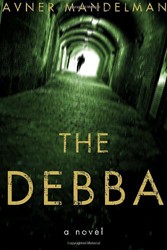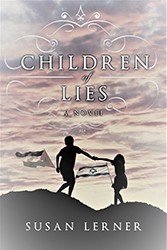City of Secrets is a brilliantly imagined vision of turmoil in 1945 Jerusalem. A Jewish Latvian man who survived the Russians, the Nazis, and then the Russians again has made his way to Palestine, going by the name of Brand. Like many with whom he associates, Brand’s lifeline is a passable identity document. If he is found by any Mandate official — or betrayed by those with whom he is shakily allied — Brand can readily be turned over to the British Mandate authorities. His life, like theirs, is a web of secrets.
Brand finds himself indebted to and dedicated to the Zionist revolution, and thus against most policies of the Mandate. He is part of a cell that uses violence to undermine the Mandate and bring about the Jewish State. At this time, the Irgun and the Haganah are working together rather than fighting each other. The members of the cell live in world that blends loyalty and suspicion in an explosive formula. Few know all of the elements of any planned action, and the stated plans are often disguising the real ones for security purposes. No one is fully trusted: no one is considered above cracking under torture. Undercover as an independent taxi driver, Brand may find himself ordered to pick up an accomplice at a certain location, but find another cell member there instead, perhaps with new orders to pick up someone else at another location. The security arrangements assure confusion and frustration.
They also frustrate relationships: Brand is in love with a woman working undercover for the revolution. She is capable and courageous, and she cares for Brand, but her loyalty — like his — is to the movement. His guilt brings painful dreams of Eva, his deceased wife. O’Nan brilliantly presents those dreams and visions, revealing a man haunted by his concentration camp experiences and losses.
With Brand and his Peugeot on the move, we see the various neighborhoods as they were then. Some of the novel’s best scenes take us along on the cell’s terrorist plots and the immediate aftermath of crumbling buildings, severed limbs, and snuffed-out lives.
Perhaps the novel’s most moving scene is that of Brand’s lonely Passover seder. In his tiny, shabby living quarters, he solemnly prepares for what he never fully knew. “Thanks to the blackouts, he had candles.” He places then in two empty beer bottles, provides a glass for Elijah, pours some wine, sets out the ritual food items, and decides that he was the child “who did not know how to ask.” He performs the ritual gestures. A flood of childhood memories, seders long past, humble him: “He wished he were a better Jew. This was a start.” A start, in its own way, as meaningful as Brand’s work for the revolution. But is the life he is leading, a life he has chosen, certainly better than the life he led as prisoner of the Nazis and the Russians?
Stewart O’Nan conjures a properly detailed portrait of postwar Jerusalem that is graphically detailed and atmospherically evocative. O’Nan’s terse, razor sharp novel, filled with political intrigue and a fascinating gallery of underground characters, illuminates a past that reveals much about Jerusalem and the rest of the Middle East of today.
Related Content:
Philip K. Jason is professor emeritus of English at the United States Naval Academy. A former editor of Poet Lore, he is the author or editor of twenty books, including Acts and Shadows: The Vietnam War in American Literary Culture and Don’t Wave Goodbye: The Children’s Flight from Nazi Persecution to American Freedom.





